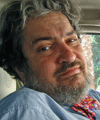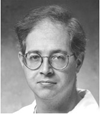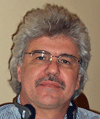1. The stature of medicine has changed relative to other career choices. Highly motivated individuals choose medicine as a career much less frequently than they did when we were younger. Medicine, which is increasingly hobbled by regulation and outside interference, is much less attractive than either business or law. Go-getters have gone into other professions.
2. The hey-day of NIH funding in the 1970s and 1980s - when the NIH had more money than good research to fund - is the baseline that academic institutions utilize when shaping their goals and expectations for NIH funding. The pie has gotten smaller, the quality of the work has gotten substantially better, and the number of people competing for funding has increased enormously. The award rate is low - 10% - and likely to go down, not up, for the foreseeable future. Many believe that 'outsiders' may face insuperable obstacles to obtaining NIH funding. Regardless, I believe that academic chairs - in all specialties - are well advised to not count upon the NIH for funding.
Importantly, the science funded by the NIH is increasingly highly specialized. MDs are less and less competitive for the funding in the few areas that are not highly specialized. The sad truth is that most people who obtain PhDs in biology cannot successfully compete for these funds. Indeed, the basic science has become so specialized that the people executing it may not appreciate its clinical ramifications. Only a small subset of clinicians have the competence to (and do) read the associated basic science literature. I remain astonished at how little I hear about P2X3, ASICs, C-Jun kinase, and JNK in our world.... The sad truth is that the manipulation of these receptors should be within the provenance of anesthesia, and it’s not.
3. There is no NIH set-aside money for anesthesia. All of the higher-ups understand this, but it bears mention. Why? Because even in domains where there is set-aside money (e.g. trauma), there is no longer sufficient money to keep everyone who wants to be or should be funded in money..... which is why the number of NIH funded MDs continues to decline, and is approaching the number of NIH funded anesthesiologists...
I wouldn't bank the future on NIH money though. As someone who worked with an NHLBI funded researcher as a fellow, I know from direct personal experience how the HIV budget was doubled every year while the NIH budget stayed flat.
4. The NIH payscale continues to lose ground to private practice dollars. This is especially true in anesthesia, but is also a problem that plagues all academic medical specialties. The sad truth is that the only way that the NIH has been able to retain investigators at the NIH is to allow them to moonlight for the pharmaceutical industry in droves. Attempts to control and manage this have been unsuccessful, as any ‘reasonable’ policy would require them to turn out the lights on an empty campus.
5. The proportion of students and residents who are married and have children has grown (or seems to have) over the past 20 years. I attribute this to both the change in the kind of person who goes into medicine and may be a consequence of the HIV epidemic (which has pushed those who plan to marry to do so earlier than they once did). As a group, these people are less likely to arrive early and stay late. This significantly diminishes their development as academics. It has also generated the best predictor of academic success I now have - which is seeing someone here at 1800 doing non-clinical work.
6. Geographical Isolation. As a group, we no longer practice in a very restricted geographic area, but are sprawled across an enormous complex. This frustrates all efforts to assemble the group to a far greater degree than anyone appreciates. Whereas it was once possible to have everyone assemble in the chairman's office or the break room for a quick 30 minute meeting, more than half of our faculty are now engaged in clinical activity that is a quarter mile from these locations. Mid-day assembly is a terrific advantage to those departments which can sustain it. Medicine grand rounds is a mid-day event- everyone can make it (attendance is not always great). The price? You push some work later into the day... and stay late that day.... These mid-day meetings are an important source of stimulation and positive reinforcement from which procedure-driven medical specialties are increasingly isolated.
7. The 80 hour mindset will be a substantial obstacle for our junior faculty to overcome. That this is in place for Gen-X will make overcoming it that much harder.
8. The regulatory burden of research has grown enormously in the past few years. Whether your interest is in conducting human studies or animal studies, the requirements for training in 1. the protection of human subjects 2. HIPAA, and 3. Animal use and care have escalated substantially (animals still have better protection than humans). It is no longer easy for someone competent to conduct a study to execute the necessary paperwork - they have to complete a variety of courses and training intended to increase their competence. At most academic institutions, the IRB has become one of its largest bureaucracies, and a large number of people at these institutions now find at least part-time employment in generating the documentation needed to comply with IRB requirements. All of this has increased the friction to doing little studies, and the start-up costs for anyone who is interested in participating in them. One of the reasons why US based research is shifting in the direction of endless surveys and into safety is because these domains are substantially less encumbered by these regulations. This is important - we still have faculty who are asking questions and following the path of least resistance to generate insight. If you haven’t found all of the obstacles yet, there is growing pressure to register every clinical trial.
9. The teaching rule. In every other medical specialty, academics can generate income while providing clinical service at a rate which surpasses what they could in private practice. Full professors of medicine typically earn as much or more than their private practice counterparts. In anesthesia, a career in academia entails an absolute decline in lifetime earnings that can never be offset. While this restricts academia to those who truly feel the call, it also prevents residents with substantial medical school debt from choosing it as a path, no matter how strongly the sirens might sing to them.
 Mitch Keamy is an anesthesiologist in Las Vegas Nevada
Mitch Keamy is an anesthesiologist in Las Vegas Nevada
 Andy Kofke is a Professor of Neuro-anesthesiology and Critical Care at the University of Pennslvania
Andy Kofke is a Professor of Neuro-anesthesiology and Critical Care at the University of Pennslvania
 Mike O'Connor is Professor of Anesthesiology and Critical Care at the University of Chicago
Mike O'Connor is Professor of Anesthesiology and Critical Care at the University of Chicago
 Rob Dean is a cardiac anesthesiologist in Grand Rapids Michigan, with extensive experience in O.R. administration.
Rob Dean is a cardiac anesthesiologist in Grand Rapids Michigan, with extensive experience in O.R. administration.
Mike, I think one other issue for academic medicine is the amount of debt incurred as a medical student. The goverment has not only cut funding for research but for student education as well. It is hard to live on an academic salary with $200,000 in school debt. I don't care how inquisitive or academically bent a person is that is an unsustainable level of debt on 110k/yr.
When I left U of C in 1990 I owed $185,000 in med school debt. Roizen couldn't afford me.
Posted by: Deano | June 26, 2024 at 09:12 AM
great commentary on issues in academic anesthesia. I still am glad i do it.
Posted by: andrew kofke | July 26, 2024 at 03:14 PM